Weed Management
Weed management is a community priority with shared roles and responsibilities which start with owners and managers of land.
Since 2016 Council has employed a Weed Program Co-ordinator dedicated to controlling council’s weeds, on its owned and managed land. Council’s NRM Facilitator supports land owners, managers and the community to with their weed management concerns and obligations.
The Weed Program Co-ordinator, working within the scope of the BODC Weed Management Plan;
- Develops an annual weed management program and implements this using a range of treatment methods.
- Strategically prioritise areas for treatment based on location, natural and economic value, weed species, size of infestation and type of weeds present.
- Organises and carries out identification of weed infestations including mapping and monitoring as well as areas that are weed free.
- Controls record management of weed treatments and follow up actions. Engages with landowners and offers advice regarding weed management.
The council weed management program is developed yearly. It is broken down into areas and priorities within those areas and includes:
- Mapping
- Monitoring
- Routine inspections
- Treatment – specifically and non-specifically (e.g. public notification of infestations)
- Target weeds – specific problem weeds in certain areas
- Quarry management
- Tip Management
- Hygiene
- Treatment follow up (when and how)
The program is a working document. This fluidity allows for flexible movement and ad-hoc activities to occur in the changing environment of the municipality. It allows the categorisation of infestations from eradication or containment and seasonality of individual weeds.
Priority weeds in Break O’Day include (from Break O’Day Weed Management Plan):
- Gorse (Ulex europaeus)
- Willow (Salix fragilis)
- Pampas (Cortaderia species)
- Brooms (Genista monspessulana, Cytisus multiflorus, C. scoparius)
- Spanish heath (Erica lusitanica)
- Boneseed (Chrysanthemoides monilifera)
- Bridal creeper (Asparagus asparagoides)
- Blackberry (Rubus fruticosus)
- Any ‘environmental weed’that is deemed to be a high risk of spreading into valuable bushland and other native habitats
We need your help! If you notice a weed in your community we want to know!
If you are not sure whether it is a weed or not you can always check our priority weed list found here.
If you would like to report a weed, please send an email to admin@bodc.tas.gov.au with ‘Weeds’ in the subject line. To help us with our records and treatment plans it would be helpful to include the below information as well;
Name (optional)
Phone number (optional)
Date of observations
Type of weed (if known) or description
Photo (if you have one)
Area where the weed was found
Description of location
Any further information you would like to add?
Below are some of our problem weed species and some basic information on controlling them. These are by no means the only weeds to be concerned about in Break O’Day. There are others, including species just as important because they are not known to occur here and that we don’t want.
Successful management of weeds requires careful planning, don’t rely on the basic information listed here. A good place to start and find more and detailed information on weeds are the weed webpages of the Department of Natural Resources and Environment Tasmania.
The other things to remember are prevention: soil and water ‘hygiene’ and to be vigilant and respond early. And follow-up: be persistent and diligent with a well planned control program over however many seasons it takes.
The are legal obligations for land owners and managers to not spread and to control weeds that are ‘declared’ in Tasmania under the Biosecurity Act 2019. Everyone has a legal General Biosecurity Duty under the Biosecurity Act. ‘WONS’ are Weeds of National Significance which are Federal government priorities for management.
There are also many ‘environmental weeds’ that pose a significant threat to the native flora and fauna of Break O’Day by invading, displacing and degrading native habitats. Environmental or bushland weeds are garden and cultivated plants that have been allowed to escape, or deliberatly dumped.
View a booklet on coastal weeds of Tasmania here.
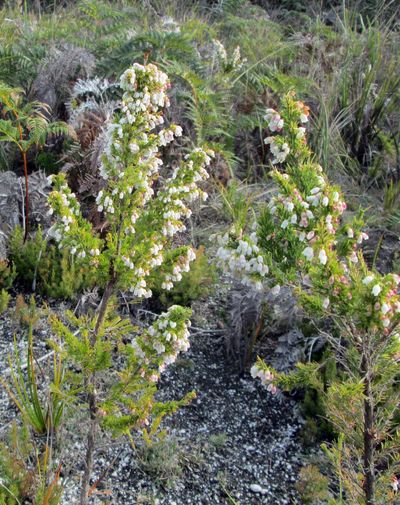
Spanish Heath
Erica lusitanica
Status – Declared Weed
Spread – Very small seed by wind, water – and by slashing. Stems can take root (layering).
Treatment – Do not slash flowering plants. Use physical and chemical control methods, well timed and followed up. Small plants can be pulled or dug, taking as much root as possible. Covering with weed matting (45 days) may be useful.
Time of treatment – When actively growing and before flowering – March-June. Avoid when flowers or seed are on plants.
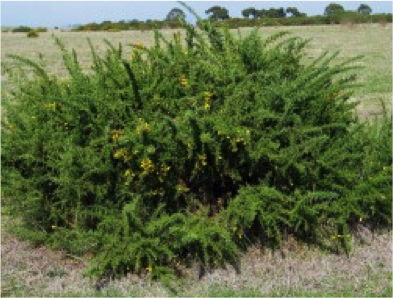
Gorse
Ulex europaeus
Status – Declared Weed
Spread – Seeds flung from pods and remain viable in soil for many years.
Treatment – Hand pull small plants; cut&paint stumps and spraying. Mechanical clearing or other physical removal are useful controlling with large infestations.
Time of treatment – Chemical control when actively growing (spring to early summer and after autumn break). Avoid spraying when in flower and when bees are active.
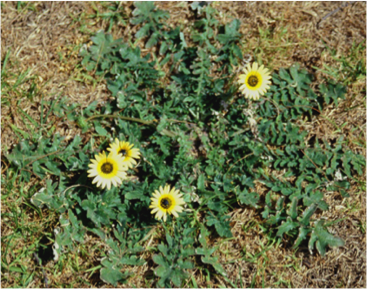
Capeweed
Status – Lawn & pasture weed.
Treatment – Spot spray or dig out
Time of treatment – Best before spring
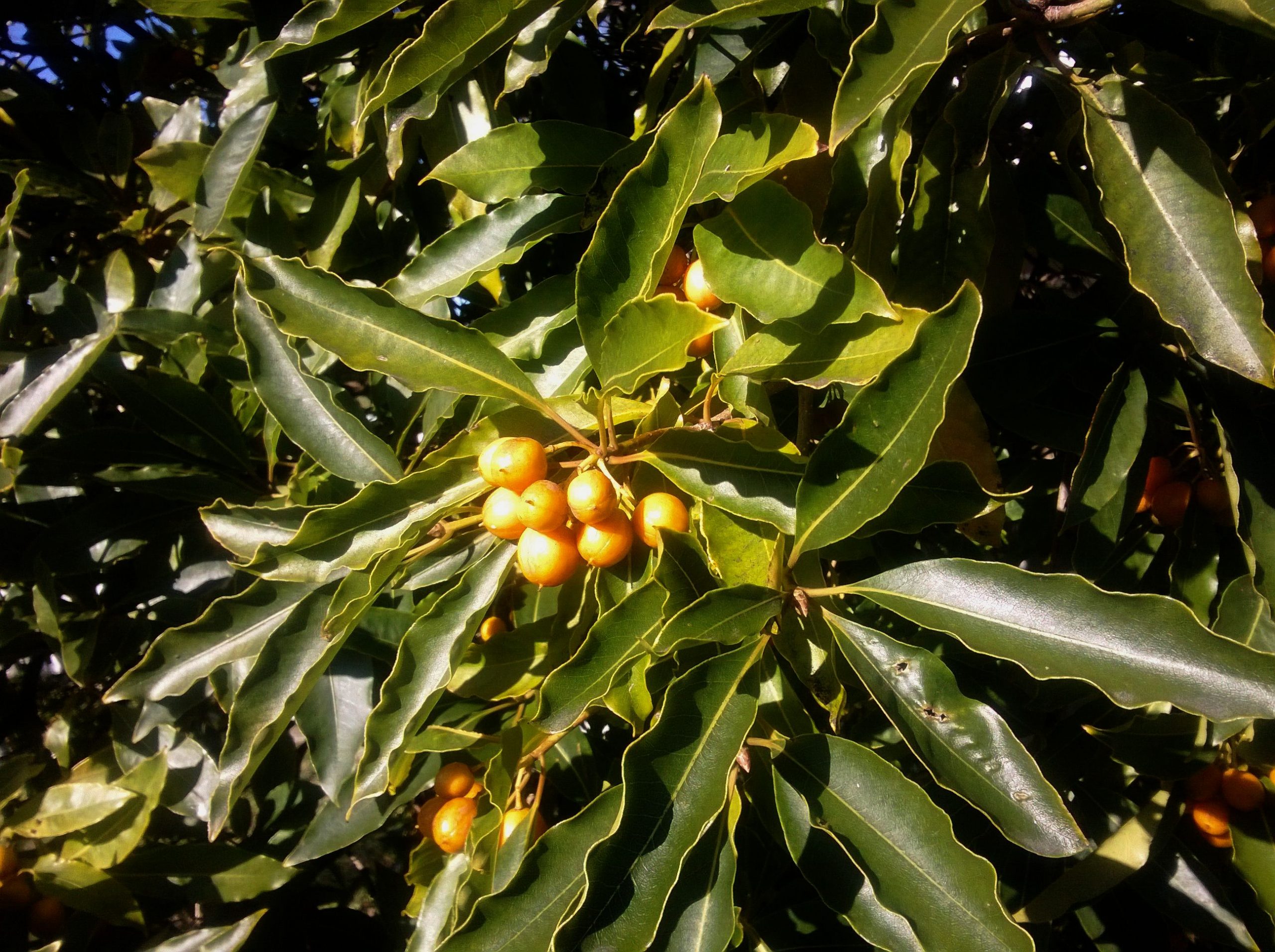
Sweet Pittosporum
Status – Environmental weed.
Spread –Typically by birds eating berries, so can travel long distances. Is shade tolerant.
Treatment – Small plants and saplings can be hand pulled and/or dug. Large plants may need herbicide treatment (cut-stump, frill or drill). Intolerant of regular fire.
Time of treatment – Before fruiting Sept-March
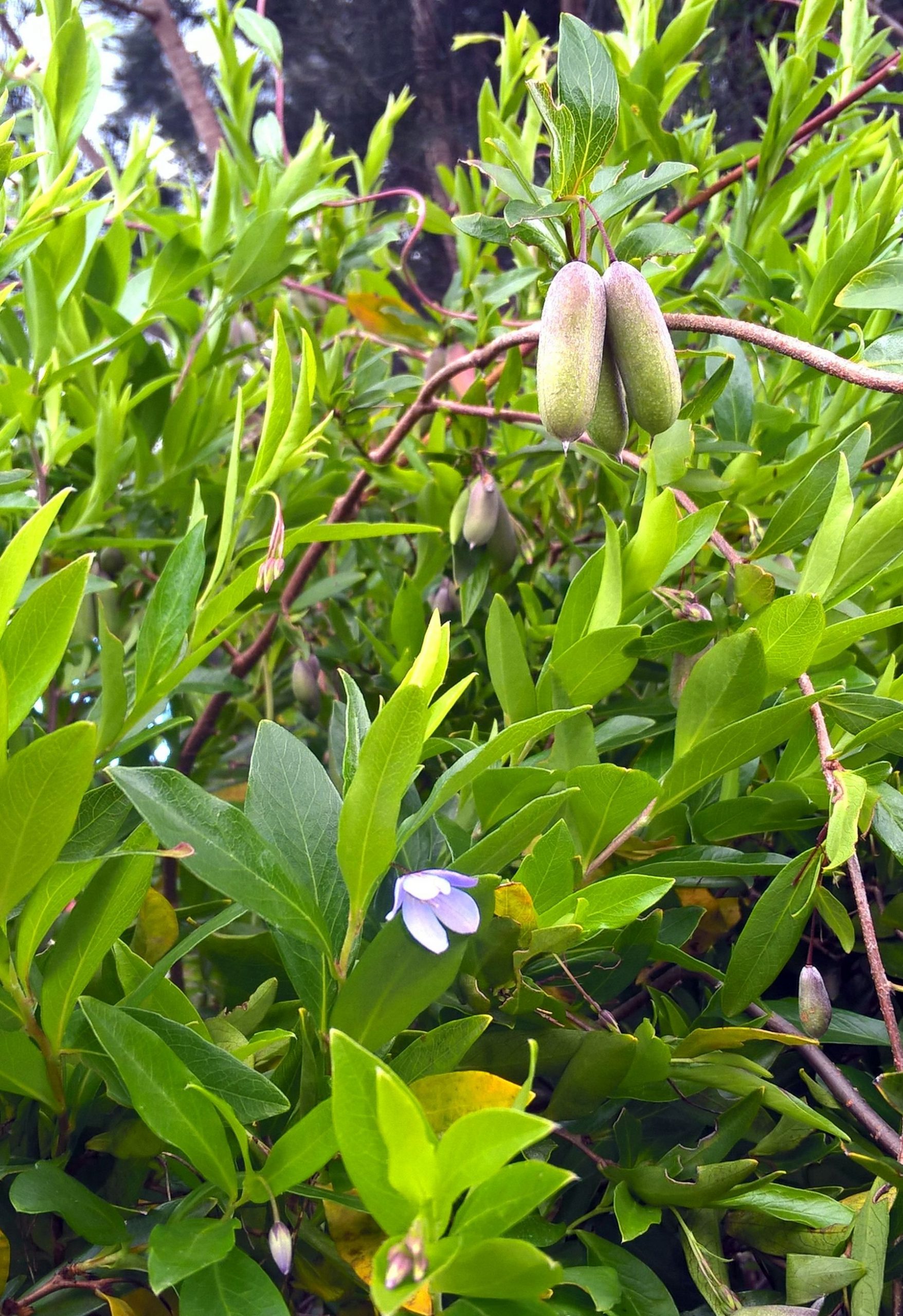
Bluebell Creeper
Status – Environmental weed
Spread – Typically by birds and other animals eating berries, so can travel long distances. May also grow from broken roots and branches on ground.
Treatment – Pull out or dig smaller plants. Larger plants may be better treated with herbicide – cut & paint or spray. Lookout for escapees in your neighbourhood and in the garden grow the Tasmanian climbing blueberry (Billardiera longiflora) instead.
Time of treatment – When actively growing Sept-Feb (in spring to stop seed production)
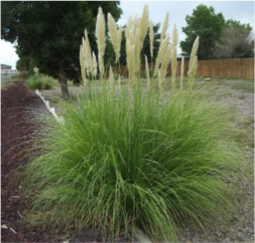
Pampas
Status – Declared Weed
Treatment – Small plants can be dug up (left upside down or burnt), larger plants can be mechanically dug up and spraying can be used.
Time of treatment – small plants all year round. Larger plants Jan-Sept (removing flower head if present
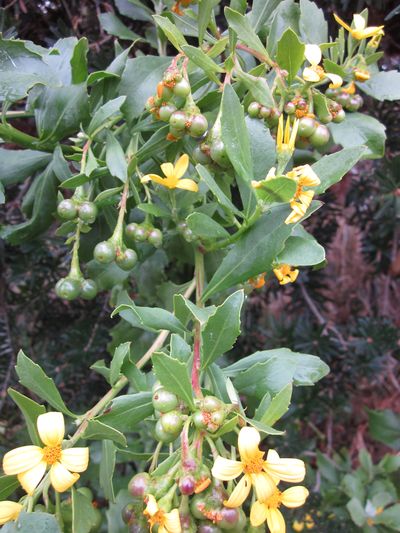
Boneseed
Chrysanthemoides monilifera
Status – Declared Weed/WONS
Spread – Typically by birds eating berries
Treatment – Shallow roots make hand pulling easy. For large plants cut&paint stumps with chemicals or spray large infestations.
Time of treatment – Before seed-set in late spring or summer, hand pull plants all year.
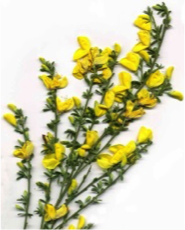
Broom
Status – Declared Weed/WONS
Treatment – Hand pulling for smaller and isolated plants, spraying and cut-steam for mature plants. Stem injection can also be used.
Time of treatment – preferably immature plants before seed production. Other treatments when plant is actively growing (May-Sept).
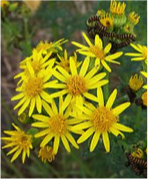
Ragwort
Status – declared weed
Treatment – Can be dug out or spot spayed. If flowering, remove flowers before treatment
Time of treatment – before flowering July-Jan
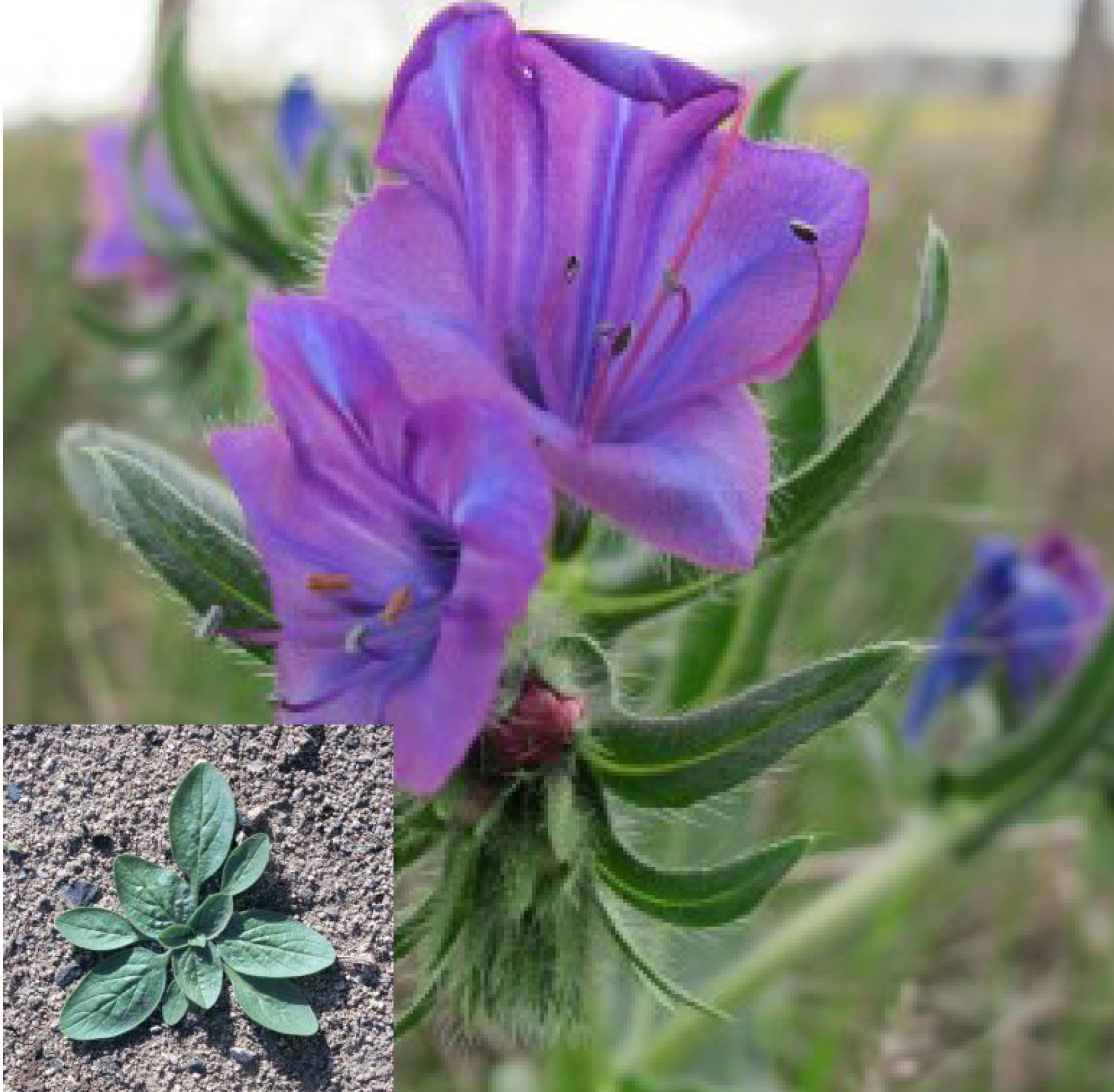
Paterson’s Curse
Status – Declared weed
Treatment – Isolated plants can be removed physically ensuring the entire tap root is removed. Spraying for larger infestations
Time of treatment – when actively growing May-Nov
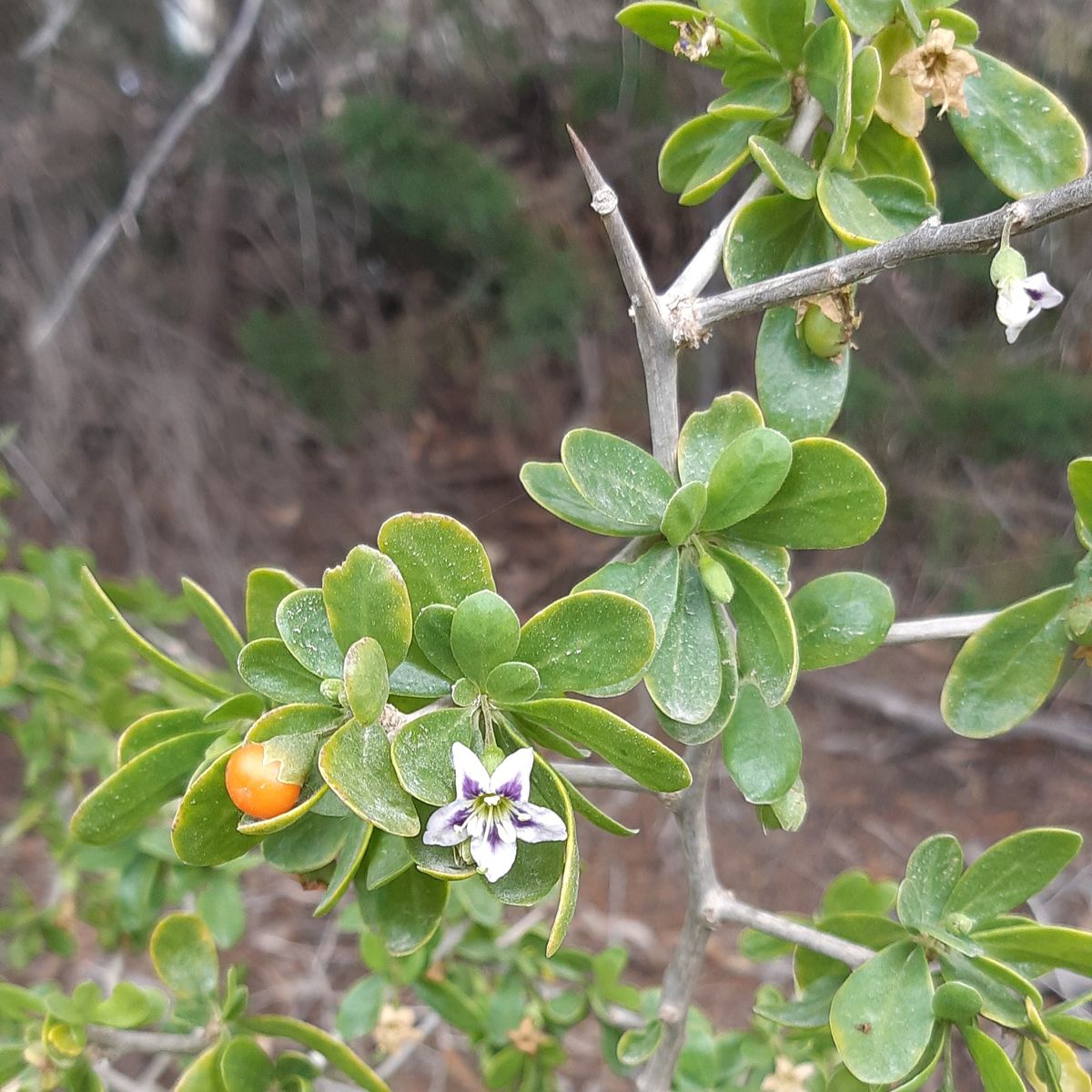
African Boxthorn
Status – declared weed
Spread – Typically by birds and other animals eating berries, often under bird roost sites.
Treatment – Spaying, cut stump or mechanical removal, beware of thorns. Revegetate after removal.
Time of treatment – Tough and hardy, so when actively growing (Sept-May).
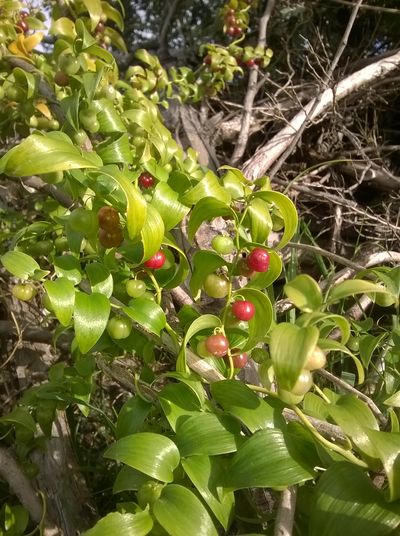
Bridal Creeper
Asparagus asparagoides
Status – Declared Weed
Spread – Soil contaminated with rhizomes, tubers and seed. Birds and other animals eating berries.
Treatment – Spot spraying chemicals. Physical removal for small infestations, ensuring all rhizomes and tubers are bagged securely and destroyed/deep buried.
Time of treatment – winter, early spring (best time)
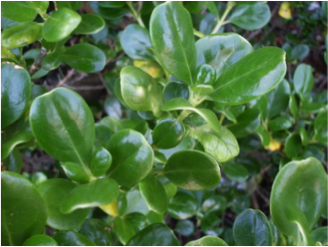
Mirror Bush
Status – Not declared
Treatment – spraying and cut stump for larger plants. Small plants can be hand pulled
Time of treatment – Best treated between June-Nov
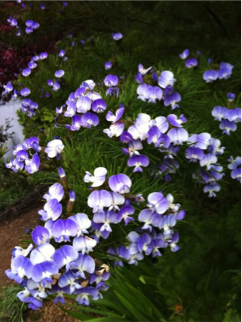
Blue Psoralea
Status – Not declared
Treatment – spraying and cut stump for larger plants. Small plants can be hand pulled
Time of treatment – Best treated between Aug-Sept
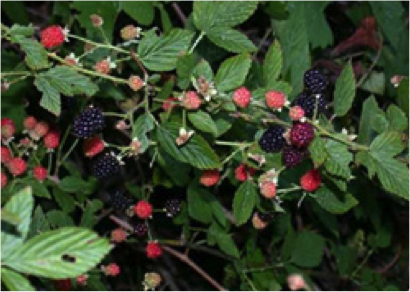
Blackberry
Status – Declared Weed/WONS
Treatment – Spaying, cut and paint, slashing (short-term), hand weeding for small plants and best with a combination of treatments.
Time of treatment – best before/or flowering. DO NOT TREAT WHEN FRUITING


